Walking and thinking, walking and not thinking, walking and being, walking and connecting with everyone, walking completely by myself and connecting with the trees, celebrating with everyone, being completely alone, these were part of the countless adventures the last few days of the Camino last summer. This will be my last entry on the matter, at least for this trip.
 |
| Sites from the Camino summer 2015. |
 |
| Scenes from Caroline's camera, snaps along the way. |
When I last wrote we were staying in Barbadelo. Everyone was up most of the night.
But the next day was still coming. We had three days to to go as we started day 19th, walking from Barbadelo to Gonzar, 108 k to get to Santiago.
At breakfast at 6:30 AM.I apologize to the Italians They were munched by the bed bugs too.
There are three or four days to go on the trail,
probably three. Everyone seems to have
lost our minds.
More and more people are on the trail. The day hikers show up on their buses. People
walk without backpacks. The guidebook notes that passing judgment serves no one. Still, I simmer when I see people in clean
clothes with fresh pilgrim t shirts and sneakers. They seem so perky and fresh,
no blisters. But who am I to say? Who am I?
Its not a philosophical question.
Its practical. By this point, its
hard to know. But my thoughts are my comfort.
The trees seem to know who I am.
I greet them, seeing faces in each.
They seem to greet me back.
Or maybe it’s the man at the store who asks if I’d
like my pilgrim book stamped? Starting
in Sarria, we have to get them stamped twice a day. He offers us stamps and asks if we’re
interested in souvenirs? Everything can
be commodified, including the Camino. At
this point, it wouldn’t be a social movement if that wasn’t the case. I can’t name a movement where it hasn’t
happened. Commodify your dissent.
I don’t even mind.
The route is still striking. When
I see the day hikers still aching along the day, I’m glad to know I’m not the
only one. My blisters have healed. The skin hardened on my feet along with the
second skin bandaids which are the work of genius.
So we walk. I
greet my friends from South Korea, strong as ever after hiking all the
way. Walking as a group, greeting
everyone, speaking in three four languages as they make their way.
My trusty walking stick has just about disappeared
several times along the road, reminding me to slow down and walk backward to
get her over and over again.
“I really like that stick,” several say. A man with a beard from is standing outside
the bar. We start chatting. A teacher from McGill University in Montreal,
he walks with his daughter. Walking and
cross country skiing are his main occupations when not teaching or doing
research. He sits with everyone, is
friends with everyone.
“We are all carriers of ideas,” he explains,
chatting about novels and stories. We talk about Cervantez and the Camino and
the lessons of the road.
“We wash our clothes and let the sun dry them,” he
reflects. “It’s a lesson we can take through our lives.”
We talk about Percival. He locates this story in the Alchemist. I find it in Fournier’s the Wanderer. The grail is in all of us, if only we can see
it in our own communities, inside us.
“You have got to be able to let go of whatever is
too heavy and let the road off you what you need,” he follows.
“Sometimes when I am in line for a shower and I
finally get there, I am so relieved. I
think of home and how lovely it is just to have a shower when I want it. The trail is always reminding me of how
lovely home is, just how lovely it is to be home.”
We chat then stop seamlessly. We’ve all seen each other for days now.
Walking forward with number two, we look at painted
shells decorated outside a bodega along the road. For a long time, Pilgrims were given a shell
from a scallop and a manuscript when they arrived in Santiago. They hung the shells on their packs. Today they are everywhere, a symbol of the Camino.
Many suggest they seem to represent the changed life we all experience as we
walk. Walking home we would be different. The shells seem to look like a hand,
symbolizing good works, the spirit of the way, which compels us to walk, share,
conserve, care, talk, and support this roving city of friends. This metropolis of ideas and people, stories
and struggles compels us to move forward, reminding us we can all make it with
the support of an essential other, be it a walking stick, a friend, family
member, or even a tree branch stretching out into the road to greet us and
remind of the beauty of the world. They all remind us to keep moving forward,
offering us shade and support, or even a place for a picnic.
Standing there, we run into Antonio and his son,
Triston, who interviews me about the road. I talk about Percival, but wish I
had said more. After they leave, I wish I
had a second chance to talk with him.
Some kids
from Texans come to chat. One is from Lubbock;
the other from Spain. She is bringing
her buddies along for the trail. Every day, we meet more people with more
stories.
Another woman from France tells me her feet are
aching. She has blisters. I ask where she started.
“Sarria,” she explains. Don’t judge Ben, I think to
myself and walk further ahead. That’s ten k ago I think to myself. Everyone finds their own struggles along the
way. The yellow arrow points forward. I
go find the next one and walk.
We walk and walk and walk and walk.
The last ten k of the day are always the hardest.
Crossing the bridge into Portomarin, we stop for
lunch and hang out a bit.
“Does anyone know where the Camino is?” asks an
American in a gruff voice, not even trying to ask in bad Spanish.
I point it out to him. And we walk up a hill winding
hill and out of town.
“This is shit,” declares number two, throwing down
her walking stick. “Walking to another town, another shit town. This is shit.”
“You sound world weary.”
“What’s that?”
“Tired of the world.”
“Well I am.”
I walk behind to get her stick, talking with two
younger women from Amsterdam, who are just behind us. They offer a little
support and we keep walking.
Gradually I stumble into the American I’d seen the
café.
We strike a conversation as we walk the last ten
k. Unemployed and seemingly unable to
complete his studies, he is walking. Romance seems iffy, he is on again off
again with a women in Holland. His bank
has cut him off, so he walks. He got tendinitis and stopped for a day in
Sarria to get some medical support. His bank card turned off, he is broke and
walking 40 k a day, looping the Camino, back and forth.
“Have you walked with anyone?” I ask.
“I left a group of friends, women, we were walking
with. We hiked from Estella to Los Arcos.
I got there and I was alone. I
walked into the Cathedral, but my head in my hands and started to cry. Never get talked into walking with an
ambitious Spanish man.”
I could see the despair on his face. The pain, the dead end stories of the Camino
are many. Yet, his is pointing to
something.
“Its great what you are doing. My parents never spent any time with me,
never. I always regretted that. You are spending
real time with you family.”
And so we walked, talking about the US, our
inability to learn from our history, the confederate flag debates, lack of gun
laws, racism, and US cultural amnesia. One looks at the walls, the bricks and
mortar of these old villages, and it reminds observers of the history of Spain,
of El Cid, St James, and their mythic struggles, as well as those very real
battles against Franco and fascism, not so long ago.
In the middle of nowhere, looking at an empty ghost town and a bar full of hikers, I looked at my text and Caroline had already gotten to Casa Garcia, the albergue where we were staying.
“Where are you?” Caroline asked in a text.
Matt and I have been talking.
“I gotta get going,” I explain.
“Good luck with finding your family,” Matt said
goodbye. I walked around. A young woman is smiling. She points the other way. In between small village roads, stray cats,
and clothes lines, I saw Casa Garcia.
Walking in Caroline was smiling, drinking a beer in
a cowboy bar. Our friends Antonio and
Triston, the Irish, our friends from San Diego, most everyone we knew were
there, sitting.
“This is lovely,” noted Caroline, smiling. It was our 14th wedding anniversary. Last year we’d celebrated with my brother and
his wife in Bordeaux. The year before in
Coney Island with our neighbors, before decade of anniversary dinners at the River
Café in beloved Brooklyn. With a room
full of our friends from the hike, this would be the best one yet.
That night, we celebrated our anniversary dinner. Even
before we sat down for our 6:30 dinner, number two, our youngest, had been
chatting with everyone there for hours. Number one sat quietly, joking, quoting
her favorite comedian, Miranda Sings.
“Donde esta Taco Bell?”
As we eat and drank cava, more and more friends
arrived from the road, people we’d been hiking with from Spain, Holland,
Ireland, Germany, Italy, France, Mexico, Philadelphia, by way of Spain, the
four women traveling together.
We share stories and band aids, second skin packs
and advice from the road.
Antonio and his son sit chatting away, talking about
their lives in Spain and the US, their film project, etc.
Caroline and Antonio commiserate about bed bugs. He had contracted them at Villafranca del
Bierzo at the municipal, where our friend from San Diego fled. She’d heard terrible things about that albergue. But did not remember the name. Then when she
was in the shower, she saw the sign and realized where she was. She got out, grabbed her stuff, and
fled. Antonio and his son stayed, waking
up later that night with bites all over his body. He’d later have to go to the hospital and
take a few days off the trail.
The Camino operates through word of mouth. We hear about people along the trail, “the
American family traveling together”, “The Swedes with their toddler,”“the
father and son”, “the bad albergue in Villafranca del Bierzo.” Word travels through the trail. We’d heard
about Antonio getting sick before he told us.
The problem is that not everyone is in on the story. We don’t all hear the same stories about the
same albergues. There has to be specific.
“You need to shame them,” noted Antonio, who was
going to write to the city governments throughout the trail to lodge complains
about the bugs when he got back home.
Antonio talked about the last time he hiked the
trail three decades ago, when people invited the pilgrims into their homes.
“That is gone,” he lamented, noting the trail has changed.
“But for all our difficulties, can you imagine what the pilgrims went through
hundreds of years ago, walking for days while eating berries, or maybe a bowl
of soup? They could only dream of what
we have here.”
The son asked to do another interview and we said
yes if we could ask his dad about the years under Franco. His expression
changed from animated to cold. There was a pause. “I really can’t… My grandfather was a
Republican, which meant he wanted more schools, education, and a modern
democracy. And he disappeared.” His blank expression said it all. “I was four
when he died.” I did not ask any more.
So we share global stories on the Camino. The father and son, parents and kids. We all hope for something real and authentic,
a way to learn. The son planned to walk
all the way to Finnisterre. Many plan to do so.
Other plan to stop in Santiago.
“But look at her.
She’s made it the whole way,” noted Antonio, referring to our nine year
old. “Many of the day hikers are
exhausted after an afternoon on the trail.
Yet, she’s made the whole way.”
Everyone was full of compliments for the two
American girls, making it through the often challenging terrain. There are only
a few other kids on the trail. Yet,
these kids have walked the whole way.
“You have no idea how much this trip is going to
leave an impression your kids,” noted my friend Monica.
“You guys could learn another language or two if
tried now,” noted Antonio. I hope the
girls do. I really do.
Yes, the walk was tiring, but we had places to go at
night, food, rest spots, unlike the Armenians, walked to death by the Turks, a
hundred years ago.
“Who remembers the Armenians?” wondered Hitler year
later, as he laid out his plans.
We were lucky to be able to be there, drinking
Spanish wine, talking with friends, still popping in from the road, looking for
a place to stay or a familiar face to talk with, still looking for something
real.
Mostly, there are people of my generation and
younger, hiking, experiencing a rite of passage of the Camino together, looking
for an encounter with friends, history, and a way to beat back alienation
together.
Just as Cervantez influenced Faulkner and Marquez
and Borges, winding a magic realist
narrative through time, so do the stories we share here.
“I could show you a thousand ways that we are still
grappling with Franco here,” noted Antonio.
We are all battling cultural amnesia.
Its easier to forget than to grapple with the lessons of such
moments. The US continues to hide away
from its racism, while pointing fingers elsewhere. In Spain, the scars of the civil war can
still be seen on the faces of the elders.
If there is one thing about the trail, I have grown
to really resent is nationalism.
Earlier in the day, a woman was offering coffee and
bananas to everyone on the trail. “What
language do you speak?” she asked in English and Spanish.
“Catalan,” noted one of the day hikers, with
contempt on his tongue. The nationalists
of the world bore me.
So we talked and talked, made plans for places to
stay, called hotels, and made arrangements to meet up in Mato-Casanova the next
day, another thirty k down the trail.
“You had better know where you are going,” noted
Antonio. He was right. We would not see him again.
I would see only a few of them again, after that
glorious evening. We’d hike for three more days, before one last reunion in
Santiago.
Day 20th Gonzar to Mato Casanova
The roots of trees seem to wind their way through
the age old walls along the trail, the dialectic between nature and the modern,
between the primordial and the conscious brain, planning and moving forward.
We slept well that night. And got up early. Number Two was angry and tired.
The pain of the trip lingered in her bones.
I had heard news about on old friend from work, who
had died after years of struggle against HIV/AIDS.
The emotions of the road are so many.
Sadness and grief and the people Cary F, an old
classmate, Dad, Tom, our uncle and brother and law, and today Laverne, who I
think about on the trail, as I wrote
on facebook.
I've spend the last month walking the Camino de
Santiago in spain. We walked 25 miles today. In a few days, we get to Santiago
after another 30 k. we've walked three hundred miles together. Throughout the
walk, we place stones for those lost to our lives. I've placed them for uncle
tom, carrie f, an old classmate, and for my dad. With 78 k to get to Santiago, I placed one for Laverne. I’ve known her since 2001. She was someone I
knew at citywide back in the day. She worked like crazy to stop the epidemic. And
she always said hi through the years, even when others did not. I last saw her in June at the campaign to end
the epidemic event at City Hall. And she
said hi. I am sorry we were not able to
do more to stop the epidemic, Lavern. I
am sorry we were not able to do more to stop the epidemic in your
lifetime. But god knows you tried. Thanks
for always saying hi.
The Camino gives us a place to remember and feel
people we’ve known, to put that stone on a pile of stones, recalling the
departed and walk in their memory, walk for them, with them, forever together
through time. all the actions of the campaign to end aids.
she also said hi to me demo after demo after I left citywide and not everyone
said hello. Cameron and laverne always said hello. I saw her in June at the end
aids press conference at city hall. she said hello as she always did. thanks
for being my friend Laverne. i'm sorry we were not able to end the epidemic in
your lifetime here. but god knows we tried and you tried. god knows you tried
and you cared. thanks for that laverne. I can't imagine going to a vocal action
and not seeing you. thanks for always saying hi.
It was a 39 k hike, exhausting. When we arrived at Mato Casanova, none of our
close friends were there. We stumbled
into a few of the hikers from Holland.
But that was it. A big empty
place in the forest, we ate and passed out.
Day 21 Mato-Casanova to Salceda
We left the hotel in the pitch black, walking our of
our room at 5:55 am. It would be our
longest day on the trail.
Number two was terrified to walk into the woods in
the pitch black. “We can’t to it,” she
said over and over, visibly fearful. We
held her hand and walked with our cell phone lights in hand, looking for yellow
signs, making sure to stay on the path. Dogs
barked in the distance. We walked for a
half hour before a peep of sunlight began to show itself. And gradually number two began to see she
could make it. The sun began to rise,
light pouring through the trees.
Trees everywhere.
“Its like walking through a medieval village after
the plague,” noted Caroline, passing Furelos, a town with a population of 135.
Seemed more like the road warrior to me, quiet and
desolate city, graffiti everywhere, but empty except for a few cats who walk with
us.
We wouldn’t find anywhere to eat for another hour. And finally, 7 K out we get a cup of coffee at 7:45 am. “It feels
like Ireland. I feel good,” she
continued. It was the second to last day
on the trail. We were going to make it.
Yet, the marks from the begs have became round and
red, settling into my skin, reminders of pain and history.
By 10:50 am, we’ve covered 14 k. Only 16 or 17 more to go. And then after
tomorrow the adventure is over. We feel
better than ever about home after all these adventures. That’s
the biggest lesson of the Camino, that home is good. Yet, going home is different. We are different.
Number one is walking stoically, number two cursing
like a sailor, and mom is walking like she is dead. But she is doing it. We all are.
“It’s a swell family vacation,” number one remarks
as we walk. Humor has kept her going,
even keep the whole walk.
Yet, it really is, even if we just meander. Each town, break for coffee, soup, person,
tree, bird chirping, or small chat with a fellow Pilgrim means so much to
me. Even the challenges are something we
can love, we can grow from. It’s a trip
we will talk about forever.
We take a break under a tree, sitting for a bit.
“Its not going to happen every year that we do
this,” notes Caroline, honoring the childhood of the girls and our time
together.
At some point, I walk ahead to get the room in
Salceda. Its feels like all afternoon
that I walk through the trees, their animated faces looking at me, as they take
shape through the branches, smiling, honoring age and time.
I think of my Dad and walk. This is my meditation and people around me. There are things I wish I had done. I wish I had seen him one more time and
really said goodbye. When he could barely talk, I could have driven to
Texas. But I didn’t. So I live with that and walk. And honor the time with my gang, with my kids
as they grow up, of time passing, and our lives changing.
I get to the Pousada de Salceda by 5:45, securing a
great room for us all. They have a foot
path and a great restaurant and outdoor area where everyone hangs out in this
200 year old albergue, renovated only a couple of years ago.
They are sweet, offering to take all our laundry and
wash it, for only a few euros. They want to be sure we get cleaned so we sleep
well, with no bed bugs around. It’s a
relief someone takes this seriously.
They want to know the albergues where we got the bugs, laughing I tell
them.
The girls are still hiking. They’ll stop for a bite before making it
in. They feel great, noting they could
have walked further than the 38 k. They could have kept going. Now that we are about done, everyone is
completely in shape for the hike.
By dinner time, my buddy from Italy is sitting
having a glass of wine. We eat together,
laughing about the road.
“Hola, hola, hola,”
she jokes. “Everyone asks about
all the important things we are thinking, but I really am just thinking about
all the miles to walk.”
So we chat about where she lived and where we’ve been.
“The last two nights, no one, everyone disappeared,”
she noted. “I didn’t run into anyone.”
It was just two nights prior that we all were
together at Casa Garcia.
The dinner was quiet. Our other lives are coming again. She works for an NGO. I’m a teaching and
organizer and social worker. What will
my next be, probably to write up this story and make sense of all we saw.
As we’ve hiked, I’ve thought about it, over and
over. There are feelings of hope about
the lessons and loss. We grieve for a
lot on the trail, including for the trees destroyed, the natural environment,
and landscape lost and then rediscovered as we walk. Over and over again, we go through these
cycles of loss and separation, followed by connection, as reification is replaced by remembering.
The feelings of hope and lessons for a more
sustainable future are many. Lessons of the trail are many
A few include:
A hope for less nationalism
More talking and sharing
Less owning, more walking together
Collective processes
Don’t pet stray cats
Unplug cause the internet does not really work here
Plus its over rated
And trust the process, so walk it out even when
tired or grumpy
Bring mosquito repellant to battle those little
fuckers
Remember bugs have changed history
Enjoy the adventure, just as Don Quixote might have
Chase windmills and free your mind
Pick up garbage
Look out for bugs
We need less than can possibly imagine
Let the sun dry your clothes
Be open to people, transnational conversations,
communication
Greet one another with kindness
Leave no trace
Use your feet more
Ride bikes
more
Travel with your feet
Let them guide you
Battling xenophobia
Day 22 August 31, Salceda to Santiago
It’s a good feeling to walk each day, the best
feeling to walk with friends and family.
I greet the eucalyptus trees and forest as we walk for our last day.
Its complicated to find our way. But we walk all day. I leave my old walking stick behind, walking
off the trail for a bit when I get it back.
“I love New York,” a women at the coffee shop
comments.
My friends from Korea are there. We greet each other and take a few
photos. One college kid knocks over his
friend’s coffee. I owe you one, he
comments. We are all bulls in China
shops, us Americans, even as we aspire to be travelers with beards and beatitues. But a little humility goes a long way.
“On the Camino, we are all equal,” notes one of my
many friends from Holland, who with ate with during that big meal at Casa
Garcia. “We all go through our phases,
bugs, pain, blisters, fatigue, and continuing.
Before the trip, her knee was a wreck. She had surgery on it. And hoped it would survive. She plays music, drums with that knee so she
needs it.
And today she is walking with it.
“I am no longer afraid of the forest,” notes number
two, who walks with me throughout the day.
We talk about “Exile on Main street.”
She greets a friend and we walk.
We are only five k away from Santiago.
A big huge grin and feeling of relief comes across
number two's face when she sees the Cathedral in the distance.
She sits in the park, looking at the cathedral. We roll down the hill in celebration.
But the final five k are hard as we walk through
town. We wander through the angling busy
streets of the city. Its hard to even
find the yellow lines. But we walk,
getting closer and closer.
“Ben,” I hear someone scream. Its our funny New
Yorkers, who’ve arrived a couple of hours ago.
They are sitting in a Café Flor, having a drink.
“This is it, your epic arrival! Bravo to you!” they greet us. We’ve now see them four times
on the trail in three different towns, O Cebreiro, Sarria, and Santiago.
We plan for dinner and keep walking. We’ll meet them at eight pm.
Number two and I walk and walk, through the streets
of the medieval city, through the plazas, looking for the Cathedral.
Arriving, I felt a deep feeling of success and
completion, awe finally seeing that Cathedral, giving number two a hug. Later, we celebrate with the funny new Yorkers at café le flor, toasting
the completion of the journey with them, over cerveza and nachos.
The next day, we go for our credential at the
cathedral.
“What did you think of the Camino?” the man giving
the credentials asked number two.
“Some of it was hard; some of it was fun” she
confessed.
“She’s one of the youngest kids I have ever seen
complete the route,” he later explained to me.
We saw our Swedish, Dutch and German friends in the
line, greeting the professor from Canada.
“Its Benjamin and his family.”
Many had hiked since 4 am, walking with the full
moon.
 |
| One of the youngest to receive the compostella. |
 |
| We’d all become a part of a roving city of friends along the way. |
 |
| My younger brother Will had hiked from Portugal to Santiago with his family. He's the one who got us on this crazy trip in the first place. |
We all see each other at mass. I am more ambivalent than ever about the church. The sins of the inquisitions, crusades, condemnation of gay people, subjugation of women, etc. these can’t be easily forgotten. A part of the Camino is reckoning back to an intolerant Europe, of Christianity, and history of Spain that sought to vanquish Moores and by the extension the other.
Throughout Santiago, boy and girl scouts walk in
“brown shirts” no less, seeming to lack an awareness of the symbolism on their
backs, connecting them with a fascist past which not long ago cast a shadow
over this country.
A group of tourists walk in, very young, with “pro
life” stickers on their shirts. I am
disgusted, recalling the church’s opposition to women’s choices or reproductive
autonomy. Poverty grows without family
planning, yet these people were these shirts.
Its scary. The scandal which rocked the church in recent years seems
obfuscated within this obedience.
By communion when we are reminded only good Catholics
can take part, so we choose to leave.
Number two and I go see St James’ remains, a box, which they say hold
his bones. Whether its there or not does not seem to be the point. The lessons of the hike are many, if even
muddied by history. There is of course, a counter narrative, which opens to a
cross-border solidarity, self organization, even anarchism, open to gestures of
care among the movements of hikers taking part.
Many of us harken to a world in which we consume less, seek to share,
build solidarity among friends, rejecting monoculture and mass transit, in
favor of people powered machines and feet.
“The pilgrim’s body is not only a conduit of
knowledge,” notes Nancy Louise Frey (1998, 218-20,222, “ but also a medium of
communication, a means to connect and make contact with others, the self, the
past and the future, nature. The body
can also be used as an agent of social
change (“cause pilgrims”), as a way to protest the fast paced, disheartening
aspects of modern society, and as a way to peacefully ask for change. Pilgrims
are noticed, and on some level many want to be noticed: perhaps they are making
a cry for help, a show of grief, a testament of faith, a plea against
resignation and persona and social stagnation, a statement about an alternative
way of living, or a public protest. In
this way pilgrims not only pray with their feel but also speak with or through
their feet or their bicycles.” The pilgrimage
is this a story of friends, shared connections and endeavors, as well as
“competing discourses” between our lives, experiences and perceptions, with
those of others whose presence we feel, even if they are no longer on the
trail. But they once were and maybe will
be again. (Frey, p.215-222).
But we are all a part of this body, a bigger body
than ourselves, joining this pilgrimage of deeds, connecting our own lives with
so many otherswe’ve met along the trail.
My brother comes to join us at the Cathedral. His family has hiked since Porto in
Portugal. We’ve all grown walking and
seeing the world.
He brought us to the Camino and for that we are all
grateful. Our father loved that Will walked it, reading his story of the
journey with pride. He lived will’s memoir of the trip. Our connection in Santiago marks a new stage
in our lives together. The two daughters
knit each others hair in mass. And then
we share a long afternoon meal, a meal for the ages, toasting with delicious
vinto tinto and gaseosa.
Taking the bus away, its sad to say goodbye to
Spain, this land of ghosts that has given us so much.
Its something none of us are going to be quick to
say goodbye to, those country vistas, the after dinner strolls, the long
afternoons, the challenges we walk through lasting forever in our minds, etched
their for eternity. Those images we saw, those vistas of the country hamlets are
now firmly etched in our souls and dreams, to repeated and remembered again and
again in the lore of our lives. The way is always a place we can go, connecting
our cities and stories with a much larger trail.
The other day, number two and i were on the subway in the concrete junble of New York City.
Number two pointed to a yellow sign right below the subway tracks. The way leads us from there and back again over and over again. We are all Parcival, finding ourselves along the way here.
The other day, number two and i were on the subway in the concrete junble of New York City.
Number two pointed to a yellow sign right below the subway tracks. The way leads us from there and back again over and over again. We are all Parcival, finding ourselves along the way here.
Sources
Brierley, John.
2013. A Pilgrim’s Guide to the
Camino de Santiago. Camino Guides, Forres Scotland.
Dintaman, Anna and Landis, David. 2013. Hiking
the Camino de Santiago. Village Press: Harleysville Pa.
Frey, Nancy Louise. 1998. Pilgrim
Tales: On and Off the Road to Santiago: Journeys Along an Ancient Way in Modern
Spain. Berkeley: University of California Press.
Kerreling, Hape. 2001. I’m off Then: Losing and Finding Myself on the Camino de Santiago.
New York: Free Press
Ludwig, Ken. 2013.
How to Teach Shakespeare to Your
Kids. Broadway Books, NY
Tremlett, Giles. 2008. Ghosts
of Spain: Travels Through Spain and Its Silent Past. Walker Press









































































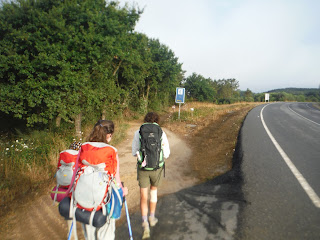




















































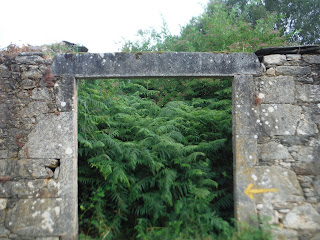


























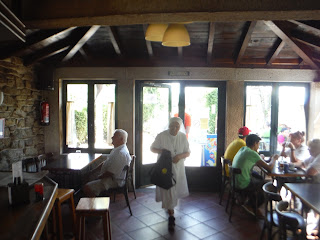


































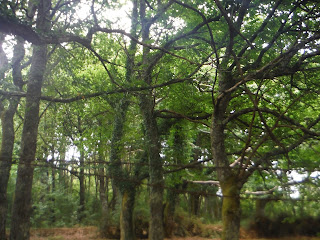

















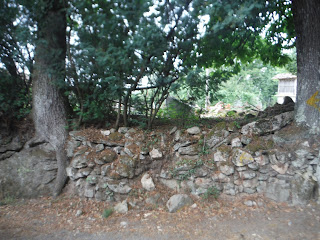

















































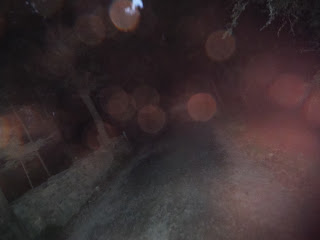





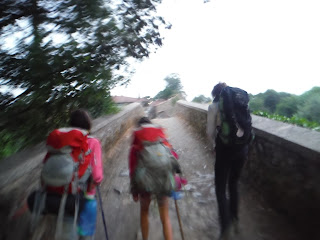

































































































































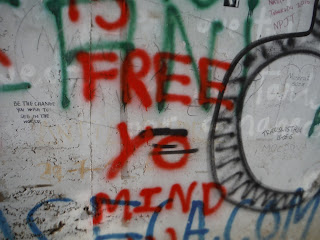








































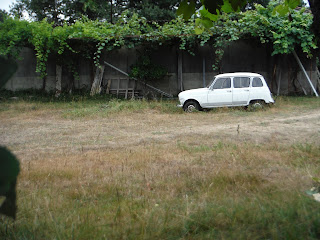






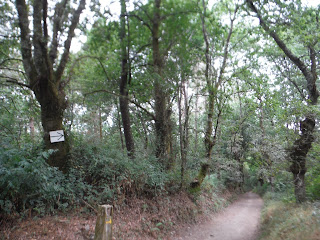























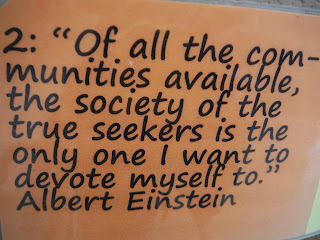




















































































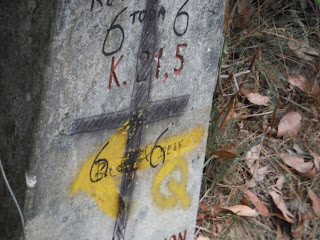























































































































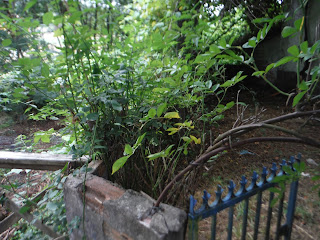




































































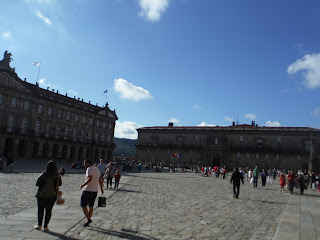















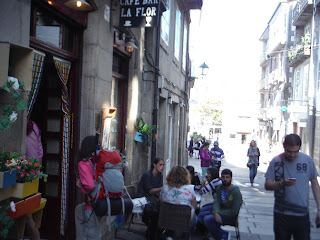










































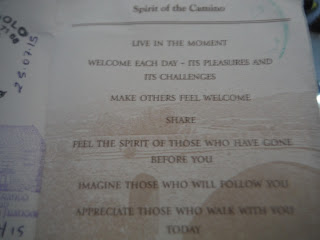





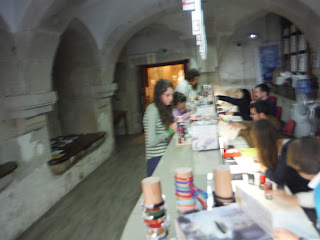

















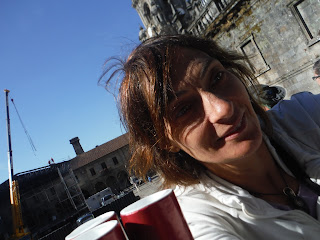
































































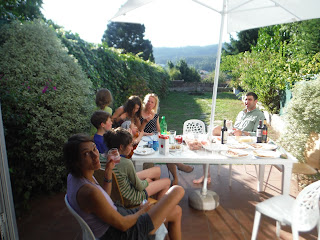



























No comments:
Post a Comment